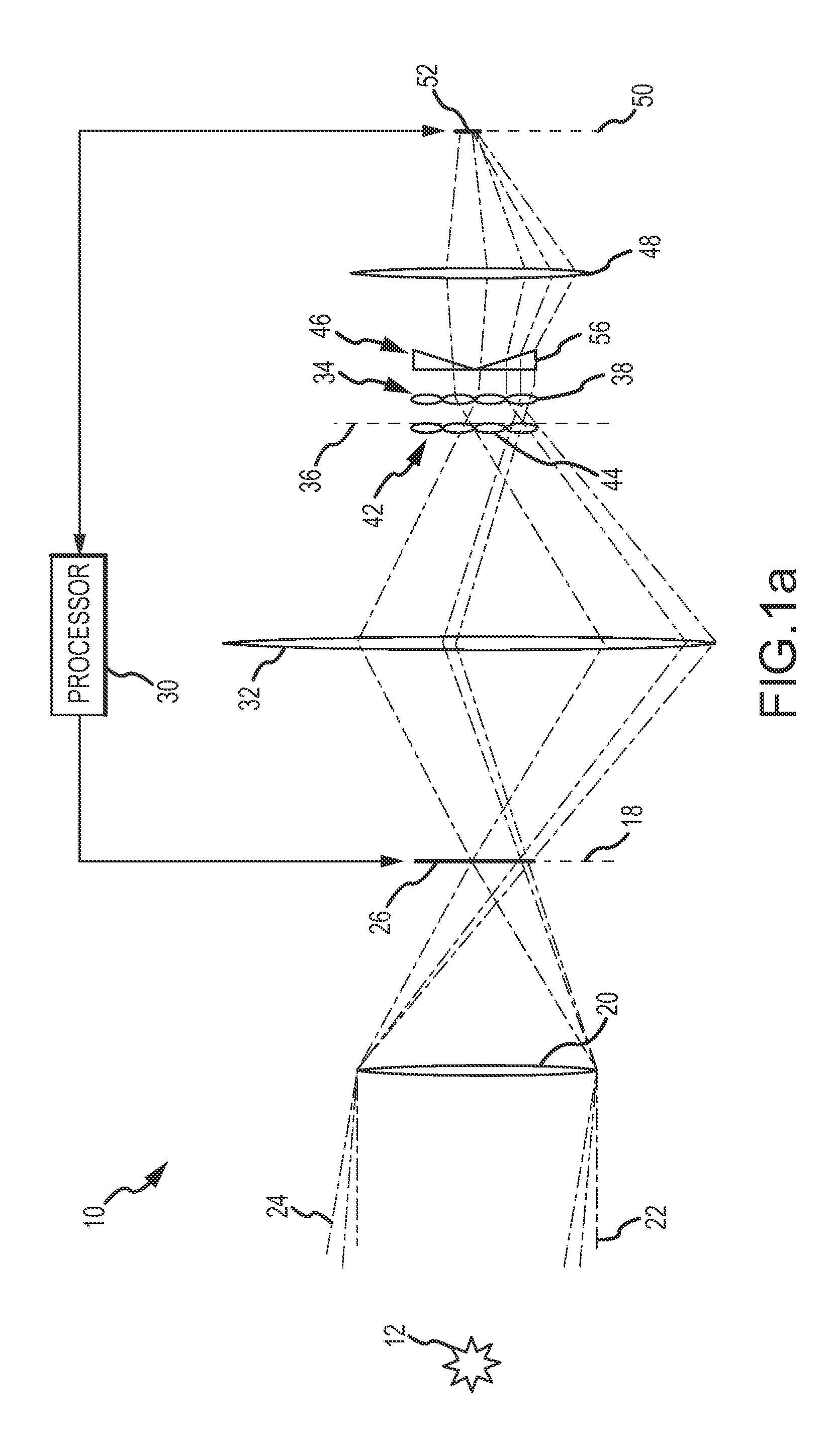Digitally scanned multi-cell electro-optic sensor
a multi-cell, electro-optic sensor technology, applied in the field of electro-optic sensors, can solve the problems of system failure, system failure to completely miss the target, and passive imaging mode does not have the sensitivity to acquire and track the target at long ranges at the desired update, etc., to achieve the effect of increasing signal strength, reducing integration period and reducing the number of times
- Summary
- Abstract
- Description
- Claims
- Application Information
AI Technical Summary
Benefits of technology
Problems solved by technology
Method used
Image
Examples
Embodiment Construction
[0030]The present invention provides a digitally scanned multi-cell EO sensor that provides capabilities similar to those of a dual-mode EO sensor with a single low-resolution imaging detector. The digitally scanned multi-cell EO sensor can be used in many applications including but not limited to guided munitions (e.g. self-propelled missiles, rockets, kinetic weapons, gun-launched projectiles or aerial bombs), satellites, space-launched kill vehicles, unmanned aerial vehicles (UAVs) and surveillance systems. Other potential uses include for guidance systems for autonomous cars or aircraft or ships and specific uses such as automated aerial refueling, ship docking or aircraft landing systems. The digitally scanned multi-cell EO sensor can be used in any system in which the EO sensor needs to provide (a) high detection sensitivity at long ranges to the object accepting low image resolution and (b) high resolution at short ranges to the object. The digitally scanned multi-cell EO sen...
PUM
 Login to View More
Login to View More Abstract
Description
Claims
Application Information
 Login to View More
Login to View More - R&D
- Intellectual Property
- Life Sciences
- Materials
- Tech Scout
- Unparalleled Data Quality
- Higher Quality Content
- 60% Fewer Hallucinations
Browse by: Latest US Patents, China's latest patents, Technical Efficacy Thesaurus, Application Domain, Technology Topic, Popular Technical Reports.
© 2025 PatSnap. All rights reserved.Legal|Privacy policy|Modern Slavery Act Transparency Statement|Sitemap|About US| Contact US: help@patsnap.com



